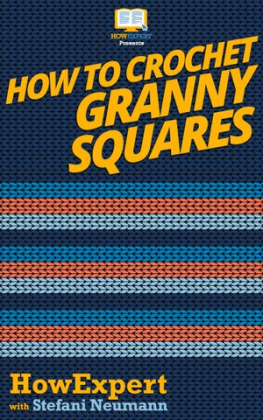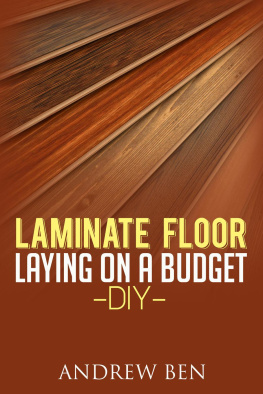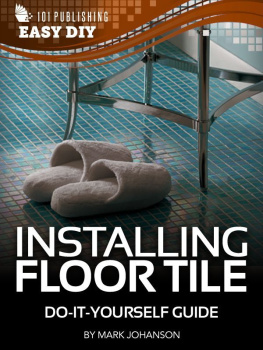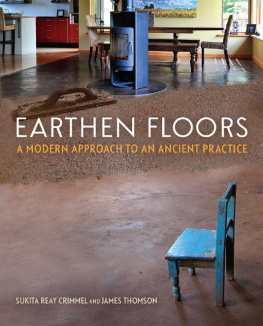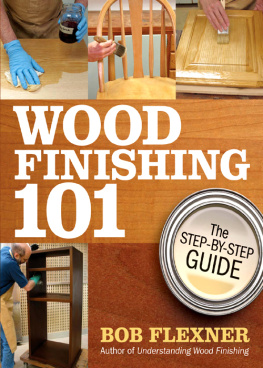HowExpert Guide to Hardwood Flooring
How to Install and Maintain Hardwood Floors
HowExpert with Marc Hagan
Copyright HowExpert
www.HowExpert.com
For more tips related to this topic, visit HowExpert.com/hardwoodflooring .
Recommended Resources
- HowExpert.com Quick How To Guides on All Topics from A to Z by Everyday Experts.
- HowExpert.com/free Free HowExpert Email Newsletter.
- HowExpert.com/books HowExpert Books
- HowExpert.com/courses HowExpert Courses
- HowExpert.com/clothing HowExpert Clothing
- HowExpert.com/membership HowExpert Membership Site
- HowExpert.com/affiliates HowExpert Affiliate Program
- HowExpert.com/writers Write About Your #1 Passion/Knowledge/Expertise & Become a HowExpert Author.
- HowExpert.com/resources Additional HowExpert Recommended Resources
- YouTube.com/HowExpert Subscribe to HowExpert YouTube.
- Instagram.com/HowExpert Follow HowExpert on Instagram.
- Facebook.com/HowExpert Follow HowExpert on Facebook.
Publishers Foreword
Dear HowExpert Reader,
HowExpert publishes quick 'how to' guides on all topics from A to Z by everyday experts.
At HowExpert, our mission is to discover, empower, and maximize everyday people's talents to ultimately make a positive impact in the world for all topics from A to Zone everyday expert at a time!
All of our HowExpert guides are written by everyday people just like you and me, who have a passion, knowledge, and expertise for a specific topic.
We take great pride in selecting everyday experts who have a passion, real-life experience in a topic, and excellent writing skills to teach you about the topic you are also passionate about and eager to learn.
We hope you get a lot of value from our HowExpert guides, and it can make a positive impact on your life in some way. All of our readers, including you, help us continue living our mission of positively impacting the world for all spheres of influences from A to Z.
If you enjoyed one of our HowExpert guides, then please take a moment to send us your feedback from wherever you got this book.
Thank you, and we wish you all the best in all aspects of life.
Sincerely,
BJ Min
Founder & Publisher of HowExpert
HowExpert.com
PSIf you are also interested in becoming a HowExpert author, then please visit our website at HowExpert.com/writers . Thank you & again, all the best!
COPYRIGHT, LEGAL NOTICE AND DISCLAIMER:
Copyright by HOWEXPERT (OWNED BY HOT METHODS). All Rights Reserved Worldwide. No part of this publication may be reproduced in any form or by any means, including scanning, photocopying, or otherwise without prior written permission of the copyright holder.
Disclaimer and Terms of Use: Please note that much of this publication is based on personal experience and anecdotal evidence. Although the author and publisher have made every reasonable attempt to achieve complete accuracy of the content in this Guide, they assume no responsibility for errors or omissions. Also, you should use this information as you see fit, and at your own risk. Your particular situation may not be exactly suited to the examples illustrated here; in fact, it's likely that they won't be the same, and you should adjust your use of the information and recommendations accordingly.
The author and publisher do not warrant the performance, effectiveness or applicability of any sites listed or linked to in this book. All links are for information purposes only and are not warranted for content, accuracy or any other implied or explicit purpose.
Any trademarks, service marks, product names or named features are assumed to be the property of their respective owners, and are used only for reference. There is no implied endorsement if we use one of these terms.
No part of this book may be reproduced, stored in a retrieval system, or transmitted by any other means: electronic, mechanical, photocopying, recording, or otherwise, without the prior written permission of the author.
Any violation by stealing this Book or downloading or sharing it illegally will be prosecuted by lawyers to the fullest extent. This publication is protected under the US Copyright Act of 1976 and all other applicable international, federal, state and local LAWS and all rights are reserved, including resale rights: you are not allowed to give or sell this Guide to anyone else.
This publication is designed to provide accurate and authoritative information with regard to the subject matter covered. It is sold with the understanding that the authors and publishers are not engaged in rendering legal, financial, or other professional advice. laws and practices often vary from state to state and if legal or other expert assistance is required, the services of a professional should be sought. the authors and publisher specifically disclaim any liability that is incurred from the use or application of the contents of this book.
COPYRIGHT BY HOWEXPERT (OWNED BY HOT METHODS)
ALL RIGHTS RESERVED WORLDWIDE.
Table of Contents
Introduction
History of Hardwood Flooring
Hardwood floors have been in existence for thousands of years and were reserved for the extremely wealthy until around the 17th century. Once the wood industry gained access to the abundance of trees in North and South America, hardwood flooring became more common. Before the 17th century, hardwood floors were hand-hewn and smoothed out with actual sand until the sandpaper's invention in the 13th century. Once sawmills were invented in the late 16th century, the hardwood flooring industry started to resemble the one we see today.
Hardwood Flooring Today
Today hardwood floors come in a wide variety of colors, sizes, and species. Colors can range from the almost white of maple to the dark black of ebony. Planks can come in different thicknesses and widths, ranging from thin 1/20th of an inch to a 3-inch stair tread. The most common thickness is 3/4th of an inch. Typical plank widths range from a narrow 1 inch to as wide as 12 inches, with 2 th inches being the most common, but special boards have been made several feet wide. There are dozens of species and subspecies of hardwood flooring, the most common being oak, cherry, hickory, maple, and walnut. Hardwood floors also come in various installation options with the advent of manufactured planks and wood-like products such as laminate and vinyl planking.
Chapter 1: Knowing Your Subfloor
The subfloor is the floor underneath the floor you see; this is the base where a hardwood floor will be installed. In some older homes, pre-1950s, the subfloor is made of fir planks and has been refinished and is exposed. Subfloors come in two basic categories: wood or concrete. To know which kind of subfloor you have, you will have to tear up the pre-existing floor.
Tearing up the Existing Floor
The only way to get to your subfloor and prepare it for your new hardwood floor is to remove the existing floor covering it. Various floors cover your subfloor, including carpet, laminate, linoleum, sheet vinyl, tile, VCT, vinyl planks, or even an existing hardwood product.
Removal of Baseboards
Baseboards will need to be removed to install a new hardwood floor unless another type of trim will be used, such as base shoe or quarter round. Caulking can also be used to cover or fill the expansion gap (explained in chapter 4); this is not usually recommended but is common when installing linoleum or sheet vinyl products. When baseboards are caulked and painted, they will need to be cut at the top for easier removal. Use a sharp razor and utility knife to cut into the wall at the top of the baseboard. Cut into wall perpendicular to the baseboard, dragging knife along the top of the baseboard. Make sure you cut all the way through any caulking or paint. This is done so that while removing baseboards, the paint will not be pulled off the wall. If baseboards are not caulked at the top or paint has not been spread along baseboards and walls, they will not have to be cut at the top. This will be noticeable by a visible gap between the baseboard and wall.
Next page

